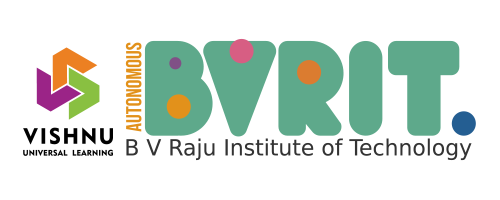Selected Area: Narsapur Mandal
Village (s): Villages contiguous to Narsapur
Block/Taluka: Narsapur
District: Medak
State: Telangana
Importance of the proposed interventions
The livelihoods of people in Telangana, especially in the districts of semi-arid regions have been severely impacted by recurrent drought. On the other hand, the Government of Telangana and Non-Government Agencies (NGOs) took up a variety of interventions over the last decade in response to this growing need for supporting a large number of livelihoods, especially for the rural poor. It has been observed that some families moved above the poverty barriers; however, those who are on the verge of poverty fell into the debt traps and lost their livelihoods. The present project had been taken up after studying comprehensively the status of livelihoods and understanding the different approaches and promotional practices (interventions) that impact these livelihoods.
| S.No. | Technologies (Interventions) | Background |
|---|---|---|
| 1 | (a) Cultivation of dryland crops > Introduction of mixed farming systems (b) Developing value-added products > Coarse cereal-based foods > Millet based fortified bars > Millet based cereal flakes > Multigrain snack > Blended products with hand-pound rice or brown rice | > Cultivation of Dryland Agriculture Crops had gained momentum in Medak district due to lack of irrigation resources (rainfall and groundwater resources). > The neglect of mixed farming systems meant that the rural populace did not have access to crops like pulses, In many parts of the target area, a wealth of traditional knowledge and agricultural practices including local varieties of food crops were completely neglected and lost. > Jowar and Millets, once regarded as poor man’s crop (especially in Telangana) is now in great demand due to increased health consciousness (high in fiber, nutrition, and lower on calories than rice and wheat) had become special |
| 2 | (c) Production of exotic flowers through greenhouse cultivation > Rose > Gerbera > Carnation | > Flowers like rose, gerbera, and carnation has high demand in Hyderabad and nearby cities of Andhra Pradesh like Vijayawada and Guntur. > Emerged as a lucrative profession with a much higher potential for returns compared to other agri-horticultural crops. > The Government of India has also identified floriculture as a niche area with vast potential for export. There are many incentives given by the Government for setting up of floricultural units as Export oriented units. > Except vegetables, the region doesn’t grow flowering crops under protected cultivation |
| 3 | (d) NTFP based livelihood interventions > Hill broom cultivation & processing/value addition > Value-added products from Butea monosperma (Plates from leaves, ropes from wood, natural color/dyes from flower, gums/resins from barks) | > Hill brooms are imported from the North Eastern States as production in the state is not sufficient to meet the requirements > Butea monosperma (Flame of the forest-moduga in telugu) can be used for timber, resin, fodder, medicine, and dye. > The wood is dirty white and soft and, being durable underwater, is used for well-curbs and water scoops. > Good charcoal can be obtained from it. > The leaves are usually very leathery and not eaten by cattle. The leaves are used by street food sellers to serve food placed on the leaves. |
| 4 | (e) Interventions in Handloom and Handicrafts > Design Interventions and Product Diversification > Introduction of “Asu” making machine in weaving for drudgery reduction (dubbaka sarees and/or gollabama motifs) | > Toy making clusters at Gummadidala and Bonthampalli – Traditional artisans of these two villages of Jinnaram Mandal of Medak district have been engaged in lacquer of toys making activity. Still, the scope is there to establish many units. > Handlooms of Jogipet and GI Index Dubbaka sarees (with gollabama motifs) are unique and have a huge demand in the Medak District. However, the women stick to old designs and traditional methods > Advanced Technology, Equipment, Design, Quality Control, and Marketing guidance are lacking > Due to inadequate exposure, product diversification is minimal. > Lack of market information thus unaware of consumer’s changing tastes and preferences > Almost 90% of artisans are illiterate and as a result, they are not in a position to manage their businesses efficiently. |
Business plan/ enterprise model/sustainability of the project
Any social/social enterprise activity with a cent percent subsidy will not be a good/successful business and/or enterprise model, but a failure. The creation of WTP involves leveraging financial support from the Department of Science and Technology, Telangana Government (State Horticultural Board), beneficiaries, and the implementing agency. Tribal Federation (TRIFED) would be involved in the marketing of value-added NTFP’s. Support would be sought from weavers cooperatives and handicraft boards for the marketing of handlooms and craft. The value-added food products would be marketed by the well-established brand of the implementing agency Aditya Foods or BVRIT. The business model of WTP is given below.
Details of the beneficiaries (direct and indirect)
The direct beneficiaries of the WTP would be women. It is proposed to train at least 1000 women in the surrounding villages of WTP in the Narsapur block of Medak district. Taking the average family of 4 members, the indirect beneficiaries would be 3000 (excluding women). Hence the project would benefit at least 4000 people in improving their socio-economic conditions and livelihoods.
Co-Investigators:
- Dr. G B. Radhika, Department of Chemical Engineering
- Dr. J Bangarraju, Department of Electrical and Electronics Engineering
- Dr. B Venkata Swamy (Biotechnology), Department of Basic Sciences & Humanities
- Dr. J Venkata Ramana (Physics), Department of Basic Sciences & Humanities Project










